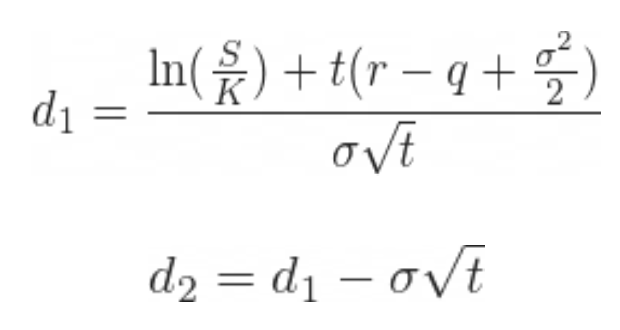This project focuses on the implementation of Black Scholes Model to price equity index options, specifically options on the S&P 500 index. The implementation aims to achieve 4 main objectives.
1. Selection of inputs for the BS Model, pricing at-the-money options and implied volatility calculation
Black-Scholes model was originally developed to price options on non-dividend paying stock. However, the model has been adapted to price option on stocks that pay dividend and other complex options. For pricing options, the model requires five inputs namely, the time to expiration, option’s strike price, risk-free rate, current underlying spot price and its volatility. The model assumes stock prices follow a lognormal distribution because asset prices cannot be negative.
Call (C) and Put (P) option price formulae are as follows:


where,
C(S, t) = European Call option price
P(S, t) = European Put option price
S = Current underlying price (spot price)
K = Strike price of the option
r = Risk-free interest rate
q = Dividend yield
sigma = volatility of the underlying (assumed to be constant)
t = Time to maturity (in years)
N = Normal Cumulative Distribution Function
Generally for an ATM option, an increase in the underlying security price would have a significant impact on the fair value of the option. This will drive the price higher for call options and vice versa in the case of put options. Since a risk-free rate reflects the time value of the exercise price, a higher risk-free rate increases the fair value of the call option. However, as the risk-free rate increases, the value of a put option decreases.









